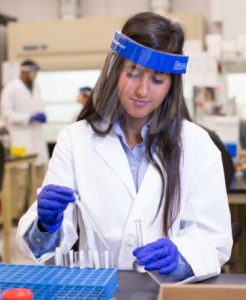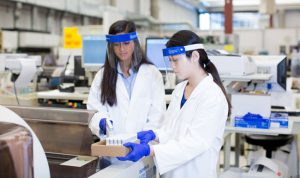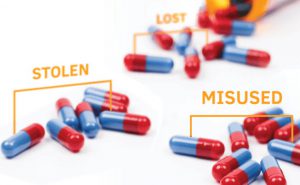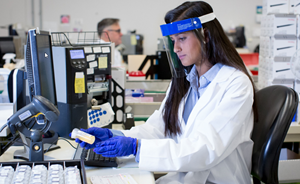The Community Drug Early Warning System (CDEWS) is designed to detect emerging drugs by re-testing urine specimens collected by criminal justice system (CJS) drug testing programs, and examining them for emerging drugs of abuse, such as synthetic cannabinoids (a.k.a. synthetic marijuana).
 The CDEWS model is based on the premise that emerging drugs of abuse often show up in high-risk CJS populations before other people in the community. In the pilot study, over one-thousand anonymous urine specimens from five CJS populations were sent to an independent laboratory for testing for an expanded CDEWS panel of more than 30 prescription and illicit drugs. In addition, over 50% of these specimens were sent to a second independent laboratory for testing for 12 synthetic cannabinoid metabolites.
The CDEWS model is based on the premise that emerging drugs of abuse often show up in high-risk CJS populations before other people in the community. In the pilot study, over one-thousand anonymous urine specimens from five CJS populations were sent to an independent laboratory for testing for an expanded CDEWS panel of more than 30 prescription and illicit drugs. In addition, over 50% of these specimens were sent to a second independent laboratory for testing for 12 synthetic cannabinoid metabolites.
The results show synthetic cannabinoids were found in all participating populations and more than 25% of young males in three of the populations tested positive for this synthetic drug. Unlike other prescription and illicit drugs, synthetic cannabinoids were as likely to be found in people who had failed the limited CJS screen as in persons who had passed. This means that drug tests that do not currently test for synthetic drugs are potentially missing a population of drug users.
CESAR FAX provides a weekly, one-page overview of timely substance abuse trends or issues. Read the latest issue for more information.
Visit our website to learn more about synthetic drug testing.
 Your Privacy Choices
|
Privacy Notices
|
Terms
|
Language Assistance / Non-Discrimination Notice | Asistencia de Idiomas / Aviso de no Discriminación | 語言協助 / 不䈚視通知
Your Privacy Choices
|
Privacy Notices
|
Terms
|
Language Assistance / Non-Discrimination Notice | Asistencia de Idiomas / Aviso de no Discriminación | 語言協助 / 不䈚視通知



















The Community Drug Early Warning System (CDEWS) is designed to detect emerging drugs by re-testing urine specimens collected by criminal justice system (CJS) drug testing programs, and examining them for emerging drugs of abuse, such as synthetic cannabinoids (a.k.a. synthetic marijuana).
The results show synthetic cannabinoids were found in all participating populations and more than 25% of young males in three of the populations tested positive for this synthetic drug. Unlike other prescription and illicit drugs, synthetic cannabinoids were as likely to be found in people who had failed the limited CJS screen as in persons who had passed. This means that drug tests that do not currently test for synthetic drugs are potentially missing a population of drug users.
CESAR FAX provides a weekly, one-page overview of timely substance abuse trends or issues. Read the latest issue for more information.
Visit our website to learn more about synthetic drug testing.